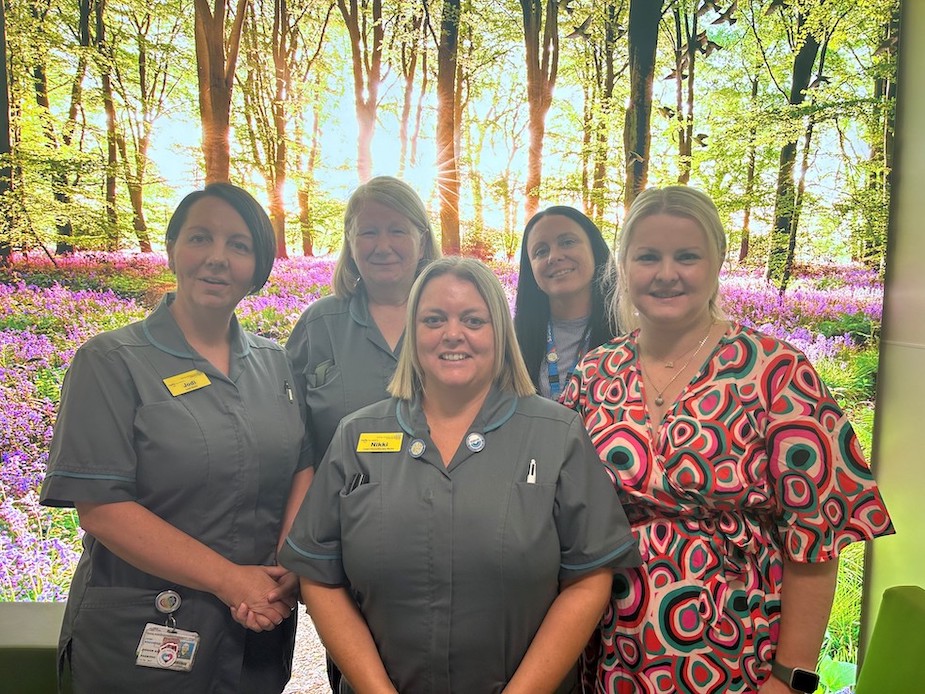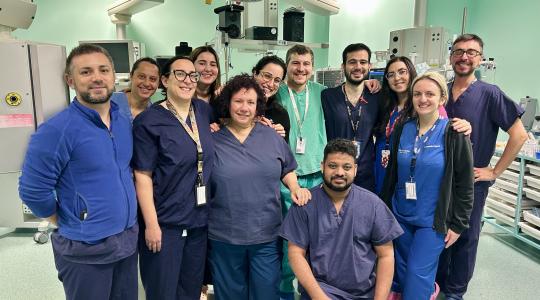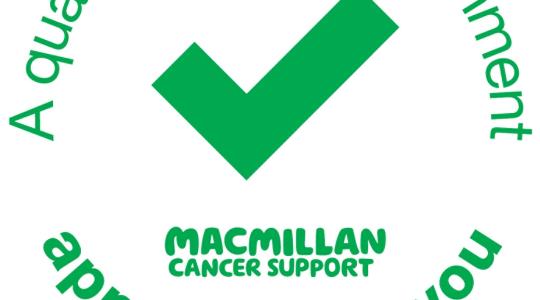BHRUT cancer team shortlisted for a Nursing Times award for digital innovation
An oncology and radiotherapy team from Barking, Havering and Redbridge University Hospitals Trust (BHRUT) has been shortlisted for the Ingrid Fuchs Cancer Nursing Award as a result of being the first trust in England to implement a virtual nurse led clinic using Noona.
They were also the first in Europe to deploy the patient education module in Noona, which provides an opportunity for nurses and radiotherapy staff to send patient information to patients at specific times in their pathway.
The Nursing Times Awards take place this year on 25 October at JW Marriott Grosvenor House Hotel, when the team will find out if they have won the award. More information about the awards is on the Nursing Times website.
Nikki Akar, Lead Chemotherapy Nurse from BHRUT, says “we are so pleased that our hard work and innovation have been recognised by being shortlisted for this prestigious award. The team has worked hard to improve patient care, pushing the boundaries and making best use of the digital tools available. We are excited to see where we can take this next.”
What is Noona?
Noona is a cloud hosted web/app-based platform designed to engage patients in their care, by providing an electronic platform to capture patient reported outcome measures (ePROMS). Noona can provide streamlined clinical workflows and has integration capabilities with Varian’s ARIA electronic medical record system which is used with BHRUT’s radiotherapy and systemic anti-cancer treatment (SACT) departments.
How does it work?
Suitable patients are either identified at time of SACT referral or by the nurse at time of telephone consultation. Patients are then sent an invitation to access Noona via email or text message. An appointment is scheduled for virtual nurse led review and a SACT symptom questionnaire is generated, which is sent to the patient via Noona 48 hours in advance of this appointment.
The questionnaire consists of the most common physical toxicities from SACT, but also symptoms such as changes in mood/emotions, distress, and mental performance.
What are the benefits?
To address the ongoing issue of capacity, a project was undertaken to develop a virtual nurse led pre SACT toxicity clinic to monitor patients receiving SACT.
Many more patients are now living longer with their diagnosis and receiving SACT that are much longer term than some traditional chemotherapy treatments. Often the patients are trying to juggle work, home life with multiple hospital attendance for review, blood tests etc. The implementation of Noona offers a digital solution to manage this group of patients.
One of the benefits of using PROMs is that it can provide the patients perspective on their disease/treatment; with a focus on what is important to them. This could lead to a better quality of life and adherence to treatment by placing the patient at the centre of their care.
From a patient perspective the team has managed to improve the home/hospital balance – in the favour of home life. Often clinics are running late – this may mean that patients have to wait in the hospital for extended periods of time waiting for their appointment or wait by the telephone for their review by phone. By completing an online questionnaire patients can do this at a convenient time for them.
What have the outcomes been?
Increased clinic capacity: A time and motion study conducted pre and post implementation of the virtual clinic has shown an increase in clinic time efficiency – the potential to review patients virtually in the same time it takes to review 1 patient on the telephone.
Increased patient engagement in care: One of the perceived benefits of using Proms is to measure patients views on their physical symptoms, their functional status and their health related quality of life. This helps creates individualised patient centred care. Initial feedback form patients has been extremely positive with a 4.6 evaluation rating on instruction received via Noona. Comments received from patients include ‘updates are much quicker than letters’; ‘great way to keep in contact with the team’; ‘very handy to check appointment times and communicate with people with any questions’.
Early intervention of symptoms/side effects: Patient initiated symptom messaging in real time allows early intervention of symptoms. Automated prioritisation of messages sent back to patients following patient initiated symptom messaging allows care teams to intervene with patient who have the most urgent need. It is hoped that by engaging patients in their care with early intervention of symptoms will reduce hospital visits, potential emergency visits and ultimately reduce hospitalisation.
What happens next?
The team is in the process expanding the current nurse led virtual clinic but also developing a Haematology CNS virtual clinic. Their next step is to involve other tumour specific CNS teams and to develop specific workflows for use within their clinics.
The team is pictured below:
Back row left to right is: Jodi Brooking, Lead Haematology/Oncology OPD and Sunflower Suite, Karen Guner, Acute Oncology Lead Nurse, Marie Weedon, Chemotherapy Management Officer, Siobhan Graham, Head of Radiotherapy
Front row is: Nikki Akar, Lead Chemotherapy Nurse
Missing from photo is: Alix Holmes, Personalised Cancer Care Programme Lead







